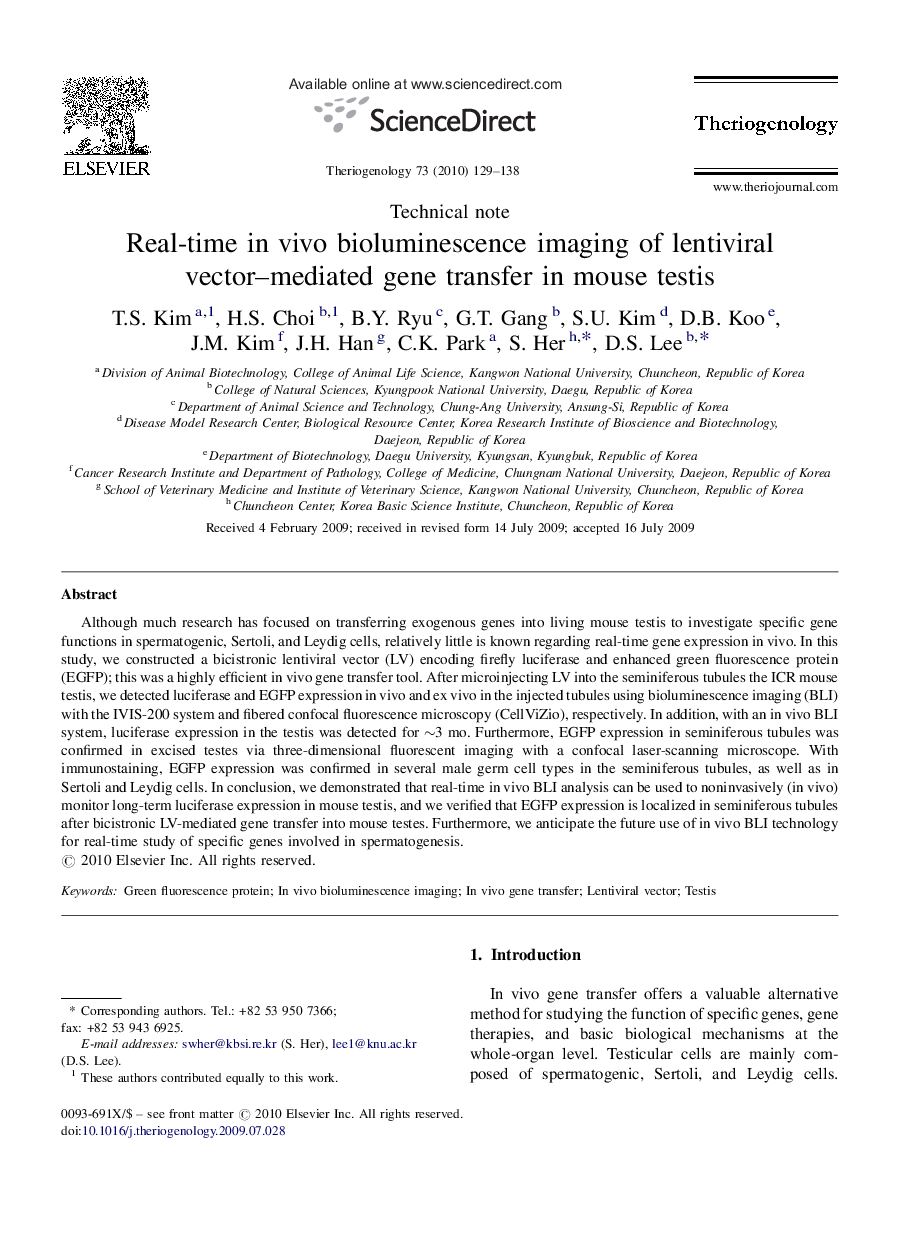| Article ID | Journal | Published Year | Pages | File Type |
|---|---|---|---|---|
| 2097987 | Theriogenology | 2010 | 10 Pages |
Although much research has focused on transferring exogenous genes into living mouse testis to investigate specific gene functions in spermatogenic, Sertoli, and Leydig cells, relatively little is known regarding real-time gene expression in vivo. In this study, we constructed a bicistronic lentiviral vector (LV) encoding firefly luciferase and enhanced green fluorescence protein (EGFP); this was a highly efficient in vivo gene transfer tool. After microinjecting LV into the seminiferous tubules the ICR mouse testis, we detected luciferase and EGFP expression in vivo and ex vivo in the injected tubules using bioluminescence imaging (BLI) with the IVIS-200 system and fibered confocal fluorescence microscopy (CellViZio), respectively. In addition, with an in vivo BLI system, luciferase expression in the testis was detected for ∼3 mo. Furthermore, EGFP expression in seminiferous tubules was confirmed in excised testes via three-dimensional fluorescent imaging with a confocal laser-scanning microscope. With immunostaining, EGFP expression was confirmed in several male germ cell types in the seminiferous tubules, as well as in Sertoli and Leydig cells. In conclusion, we demonstrated that real-time in vivo BLI analysis can be used to noninvasively (in vivo) monitor long-term luciferase expression in mouse testis, and we verified that EGFP expression is localized in seminiferous tubules after bicistronic LV-mediated gene transfer into mouse testes. Furthermore, we anticipate the future use of in vivo BLI technology for real-time study of specific genes involved in spermatogenesis.
